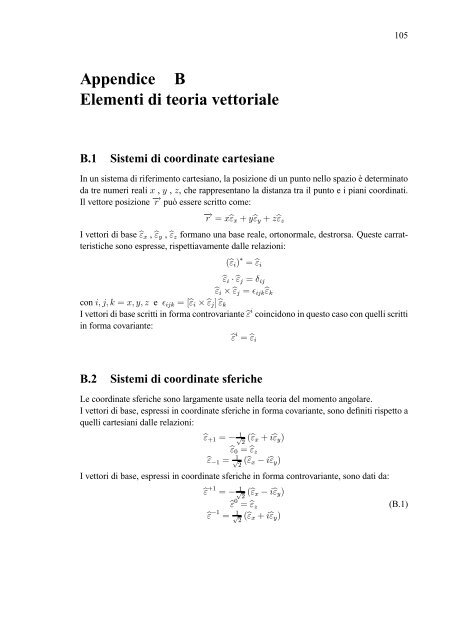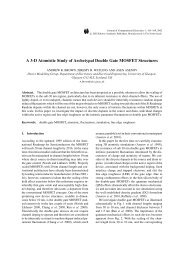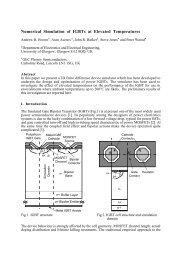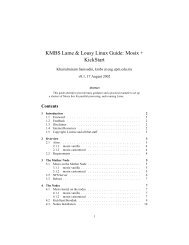Diffusione Raman Anelastica Risonante di Raggi X con Risoluzione ...
Diffusione Raman Anelastica Risonante di Raggi X con Risoluzione ...
Diffusione Raman Anelastica Risonante di Raggi X con Risoluzione ...
Create successful ePaper yourself
Turn your PDF publications into a flip-book with our unique Google optimized e-Paper software.
Appen<strong>di</strong>ce B<br />
Elementi <strong>di</strong> teoria vettoriale<br />
B.1 Sistemi <strong>di</strong> coor<strong>di</strong>nate cartesiane<br />
105<br />
In un sistema <strong>di</strong> riferimento cartesiano, la posizione <strong>di</strong> un punto nello spazio è determinato<br />
da tre numeri reali x , y , z, che rappresentano la <strong>di</strong>stanza tra il punto e i piani coor<strong>di</strong>nati.<br />
Il vettore posizione −→ r può essere scritto come:<br />
−→ r = xbεx + ybεy + zbεz<br />
I vettori <strong>di</strong> base bεx , bεy , bεz formano una base reale, ortonormale, destrorsa. Queste carratteristiche<br />
sono espresse, rispettiavamente dalle relazioni:<br />
(bεi) ∗ = bεi<br />
bεi · bεj = δij<br />
bεi × bεj = ²ijkbεk<br />
<strong>con</strong> i, j, k = x, y, z e ²ijk =[bεi × bεj]bεk<br />
I vettori <strong>di</strong> base scritti in forma <strong>con</strong>trovariante bε i coincidono in questo caso <strong>con</strong> quelli scritti<br />
in forma covariante:<br />
bε i = bεi<br />
B.2 Sistemi <strong>di</strong> coor<strong>di</strong>nate sferiche<br />
Le coor<strong>di</strong>nate sferiche sono largamente usate nella teoria del momento angolare.<br />
I vettori <strong>di</strong> base, espressi in coor<strong>di</strong>nate sferiche in forma covariante, sono definiti rispetto a<br />
quelli cartesiani dalle relazioni:<br />
bε+1 = − 1 √ (bεx + ibεy)<br />
2<br />
bε0 = bεz<br />
bε−1 = 1 √ 2 (bεx − ibεy)<br />
I vettori <strong>di</strong> base, espressi in coor<strong>di</strong>nate sferiche in forma <strong>con</strong>trovariante, sono dati da:<br />
bε +1 = − 1 √ 2 (bεx − ibεy)<br />
bε 0 = bεz<br />
bε −1 = 1 √ 2 (bεx + ibεy)<br />
(B.1)





